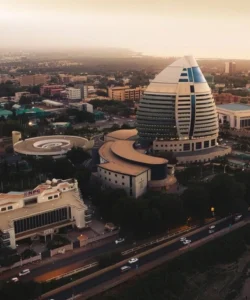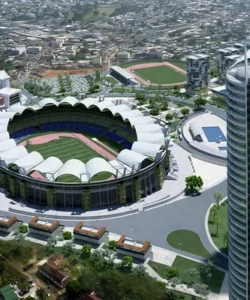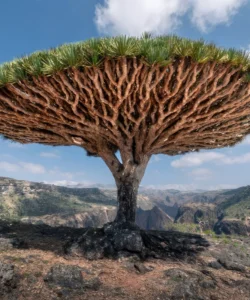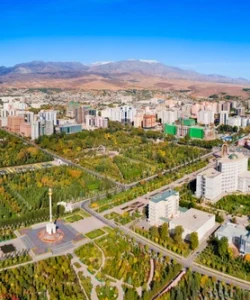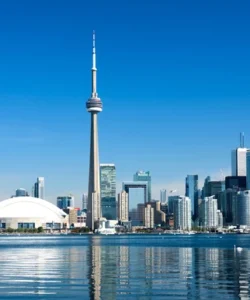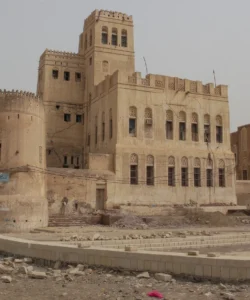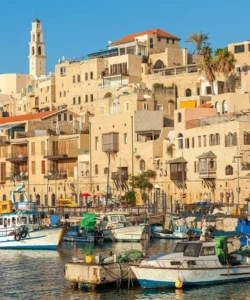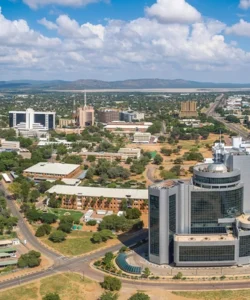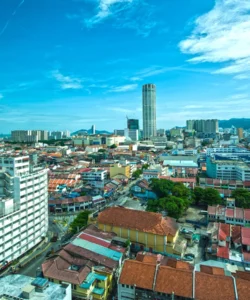Panama is a vibrant country located on the isthmus connecting Central and South America. It is globally famous for the Panama Canal, a marvel of engineering, and is also known for its stunning biodiversity, indigenous cultures, and a unique blend of modern cityscapes and pristine natural environments.
![]()
Area and Population:
Panama covers an area of approximately 75,417 km² (29,119 sq mi). Its population is estimated to be around 4.6 million inhabitants (as of 2024).
Language:
The official language of Panama is Spanish. English is widely understood in business and tourist areas, particularly in Panama City and Bocas del Toro. Indigenous languages such as Ngäbere, Kuna (Dulegaya), and Emberá are also spoken by their respective communities.
Currency:
Panama has a unique monetary system. The official currency is the Balboa (PAB), but it exists only in coin form and is pegged at par with the United States Dollar (USD). U.S. dollar banknotes are the primary paper currency used throughout the country.
Religion:
The predominant religion in Panama is Christianity, with Catholicism being the largest denomination. Protestantism has a significant and growing presence. There are also smaller percentages of other faiths, including various indigenous spiritual beliefs, Judaism, and Islam, reflecting Panama’s diverse population.
Capital:
The capital city of Panama is Panama City, a modern and dynamic metropolis located on the Pacific coast at the entrance to the Panama Canal. It’s known for its impressive skyline, historic old quarter, and bustling financial district.
Major Cities:
Besides Panama City, other significant cities and towns in Panama include:
- Colón: A major port city on the Caribbean side at the Atlantic entrance to the Panama Canal, known for its Free Trade Zone.
- David: The third-largest city, located in the western province of Chiriquí, a gateway to the highlands and Pacific coast.
- Santiago: A city in central Panama.
- Boquete: A popular highland town in Chiriquí, known for its coffee plantations, cool climate, and outdoor activities.
- Bocas del Toro: A popular archipelago on the Caribbean coast, known for its vibrant Afro-Caribbean culture, beautiful beaches, and excellent snorkeling/diving.
Attractions and Wonders:
Panama offers a blend of engineering marvels, historical sites, and incredible natural beauty.
- Panama Canal: The iconic engineering feat that connects the Atlantic and Pacific Oceans. Visitors can observe ships passing through the Miraflores Locks (near Panama City) or Gatún Locks (near Colón) at visitor centers, which include museums.
- Casco Viejo (Old Quarter), Panama City: A UNESCO World Heritage site, this beautifully restored colonial district features colorful buildings, charming plazas, historic churches, and a vibrant nightlife scene.
- Panamá Viejo (Old Panama City): The ruins of the first Panama City, destroyed by pirates in 1671, also a UNESCO World Heritage site, offering a glimpse into the country’s early history.
- Boquete and Chiriquí Highlands: A region known for its cooler mountain climate, lush cloud forests, coffee plantations, hiking (including Volcán Barú, Panama’s highest peak), white-water rafting, and birdwatching (including the resplendent quetzal).
- San Blas Islands (Guna Yala): An autonomous territory of the indigenous Guna (Kuna) people. This stunning archipelago boasts hundreds of pristine, palm-fringed islands with white sand beaches and clear turquoise waters, offering unique cultural immersion and idyllic relaxation.
- Bocas del Toro Archipelago: A popular Caribbean destination offering beautiful beaches, excellent snorkeling and diving on coral reefs, bioluminescence tours, and a relaxed, vibrant island atmosphere.
- Soberanía National Park and Gamboa Rainforest Reserve: Close to Panama City, these protected areas offer dense rainforest, incredible biodiversity, and opportunities for wildlife viewing (monkeys, sloths, toucans), birdwatching, and rainforest adventures.
- Pearl Islands (Archipiélago de las Perlas): A group of islands in the Pacific, known for their clear waters, white sand beaches, and deep-sea fishing.
- El Valle de Antón: A picturesque town nestled in the crater of an extinct volcano, known for its Sunday market, square trees, and El Chorro Macho waterfall.
Architecture:
Panamanian architecture showcases a stark contrast between its historical periods and modern development.
- Colonial Architecture: Exquisitely preserved in Casco Viejo, featuring colorful two and three-story buildings with iron balconies, red-tiled roofs, and inner courtyards, influenced by Spanish and French styles.
- Republican Architecture: Late 19th and early 20th-century buildings in Panama City’s older areas blend Neoclassical and Art Deco influences.
- Modern Skyscrapers: Panama City’s skyline is dominated by impressive, often futuristic, skyscrapers, reflecting its status as a regional financial hub. This gives it a unique juxtaposition with the historic Casco Viejo.
- Indigenous Architecture: Traditional indigenous constructions, particularly among the Guna and Emberá communities, reflect ancestral building techniques adapted to their environment.
Roads:
Panama has a relatively well-developed road network, especially the Pan-American Highway which traverses the country, connecting major cities and facilitating trade. Most major routes are paved and in good condition. However, roads leading to more remote areas, especially within indigenous territories (like Guna Yala, which has limited road access) or deep into rainforests, can be unpaved and challenging. Public bus service is extensive and a common, affordable way to travel between towns.
Hotels:
Panama offers a wide array of accommodation options. Panama City boasts numerous international luxury hotels, business hotels, boutique hotels (especially in Casco Viejo), and a growing number of hostels. In popular tourist destinations like Boquete, Bocas del Toro, and on the islands, you’ll find eco-lodges, boutique resorts, beachfront hotels, and guesthouses catering to various budgets.
Restaurants and Cuisine:
Panamanian cuisine is a flavorful blend of indigenous, African, Spanish, and Afro-Caribbean influences, often featuring fresh seafood, rice, beans, and tropical fruits. It’s generally not overly spicy.
- Key Dishes:
- Sancocho de Gallina: A hearty chicken soup with root vegetables (ñame, yuca), corn, and cilantro, often considered the national dish.
- Arroz con Pollo: Rice cooked with shredded chicken and vegetables, a popular and common meal.
- Ceviche: Fresh seafood (often corvina – sea bass) marinated in lime juice with onions, cilantro, and chili peppers.
- Patacones (Tostones): Thick, twice-fried green plantain slices, a popular side dish.
- Pescado Frito: Fried whole fish, especially popular on the coast.
- Ropa Vieja: Shredded beef stewed with vegetables in a tomato-based sauce, typically served with rice.
- Tamales: Corn dough filled with meat, vegetables, and sometimes olives or raisins, wrapped in banana leaves and steamed.
- Yuca Frita: Fried cassava root, often served with a dipping sauce.
- Fresh Tropical Fruits: Abundant availability of mango, pineapple, papaya, passion fruit, watermelon, and more.
- Restaurants: Panama City has a diverse culinary scene, ranging from high-end international restaurants and fusion cuisine to traditional Panamanian eateries (“fondas” or “comedores”). Casco Viejo is particularly known for its vibrant dining and nightlife. In other regions, local restaurants offer authentic dishes, and seafood is a highlight in coastal areas and the islands.


